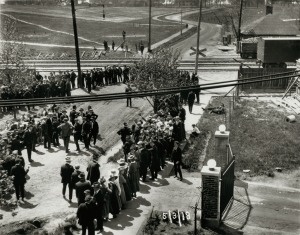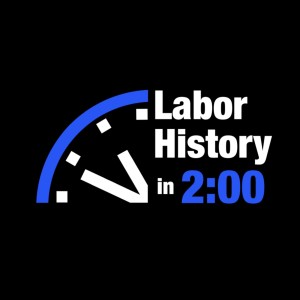
- Podcast Features
-
Monetization
-
Ads Marketplace
Join Ads Marketplace to earn through podcast sponsorships.
-
PodAds
Manage your ads with dynamic ad insertion capability.
-
Apple Podcasts Subscriptions Integration
Monetize with Apple Podcasts Subscriptions via Podbean.
-
Live Streaming
Earn rewards and recurring income from Fan Club membership.
-
Ads Marketplace
- Podbean App
-
Help and Support
-
Help Center
Get the answers and support you need.
-
Podbean Academy
Resources and guides to launch, grow, and monetize podcast.
-
Podbean Blog
Stay updated with the latest podcasting tips and trends.
-
What’s New
Check out our newest and recently released features!
-
Podcasting Smarter
Podcast interviews, best practices, and helpful tips.
-
Help Center
-
Popular Topics
-
How to Start a Podcast
The step-by-step guide to start your own podcast.
-
How to Start a Live Podcast
Create the best live podcast and engage your audience.
-
How to Monetize a Podcast
Tips on making the decision to monetize your podcast.
-
How to Promote Your Podcast
The best ways to get more eyes and ears on your podcast.
-
Podcast Advertising 101
Everything you need to know about podcast advertising.
-
Mobile Podcast Recording Guide
The ultimate guide to recording a podcast on your phone.
-
How to Use Group Recording
Steps to set up and use group recording in the Podbean app.
-
How to Start a Podcast
-
Podcasting
- Podcast Features
-
Monetization
-
Ads Marketplace
Join Ads Marketplace to earn through podcast sponsorships.
-
PodAds
Manage your ads with dynamic ad insertion capability.
-
Apple Podcasts Subscriptions Integration
Monetize with Apple Podcasts Subscriptions via Podbean.
-
Live Streaming
Earn rewards and recurring income from Fan Club membership.
-
Ads Marketplace
- Podbean App
- Advertisers
- Enterprise
- Pricing
-
Resources
-
Help and Support
-
Help Center
Get the answers and support you need.
-
Podbean Academy
Resources and guides to launch, grow, and monetize podcast.
-
Podbean Blog
Stay updated with the latest podcasting tips and trends.
-
What’s New
Check out our newest and recently released features!
-
Podcasting Smarter
Podcast interviews, best practices, and helpful tips.
-
Help Center
-
Popular Topics
-
How to Start a Podcast
The step-by-step guide to start your own podcast.
-
How to Start a Live Podcast
Create the best live podcast and engage your audience.
-
How to Monetize a Podcast
Tips on making the decision to monetize your podcast.
-
How to Promote Your Podcast
The best ways to get more eyes and ears on your podcast.
-
Podcast Advertising 101
Everything you need to know about podcast advertising.
-
Mobile Podcast Recording Guide
The ultimate guide to recording a podcast on your phone.
-
How to Use Group Recording
Steps to set up and use group recording in the Podbean app.
-
How to Start a Podcast
-
Help and Support
- Discover

On this day in labor history, the year was 1918.
That was the day workers at Wagner Electric in St. Louis ended their twelve-day walkout, in exchange for promised negotiations regarding union recognition, higher wages and fewer work hours.
Wagner held defense contracts to provide detonators and firing pins for munitions.
With the U.S entrance into World War I, the orders increased, as did the labor shortage.
In this instance, more women entered the workforce.
Wagner was no exception.
During this period, nearly a quarter of the St. Louis factory workers were female.
Yet the unionized industries made no attempt to organize them.
Amid a strike wave that rocked the city, about 1000 men and women struck Wagner on March 6.
They demanded the reinstatement of coworkers who had been fired for attending a Machinist’s Union meeting.
A week later, close to 2700 workers were on strike.
The male workers at Wagner made less than half of their counterparts in the unionized industries, while their women coworkers made half of that!
Workers contended that Wagner violated federal contracts by refusing to honor the eight-hour day and equal pay for equal work.
Historian Rosemary Feurer notes the Ordnance Department reached a tentative deal to get workers back to the job and then spiked negotiations by smearing strikers as unpatriotic.
The company refused to address longstanding grievances.
According to Katharine Corbett, Wagner Electric also “required workers to sign loyalty pledges to the company.”
Over half the workforce would walkout the following month, with the support of Mother Jones.
Workers appealed to a more sympathetic War Labor Board, but found they could not get the agreements they demanded until the years of industrial organizing in the 1930s.
More Episodes
 2025-08-08
2025-08-08
 2025-08-07
2025-08-07
 2025-08-06
2025-08-06
 2025-08-04
2025-08-04
 2025-08-03
2025-08-03
 2025-08-02
2025-08-02
 2025-08-01
2025-08-01
 2025-07-31
2025-07-31
 2025-07-30
2025-07-30
 2025-07-29
2025-07-29
 2025-07-28
2025-07-28
 2025-07-27
2025-07-27
 2025-07-26
2025-07-26
 2025-07-25
2025-07-25
 2025-07-24
2025-07-24
 2025-07-23
2025-07-23
 2025-07-22
2025-07-22
 2025-07-21
2025-07-21
 2025-07-20
2025-07-20
Create your
podcast in
minutes
- Full-featured podcast site
- Unlimited storage and bandwidth
- Comprehensive podcast stats
- Distribute to Apple Podcasts, Spotify, and more
- Make money with your podcast
It is Free
- Privacy Policy
- Cookie Policy
- Terms of Use
- Consent Preferences
- Copyright © 2015-2025 Podbean.com


